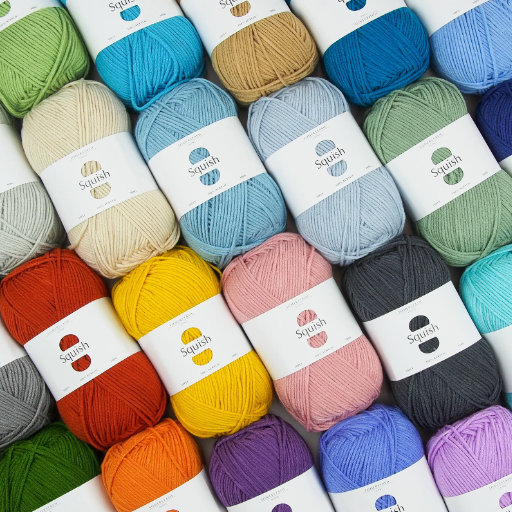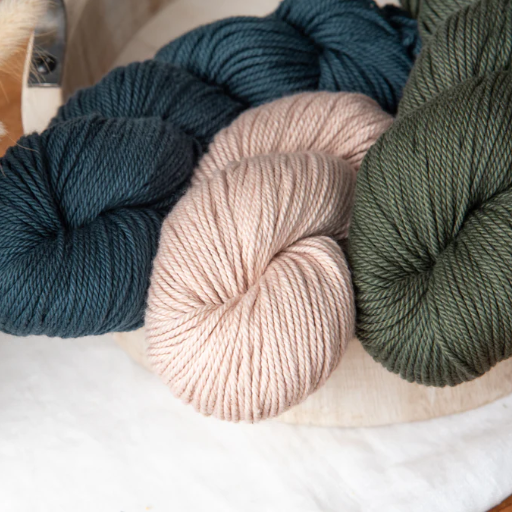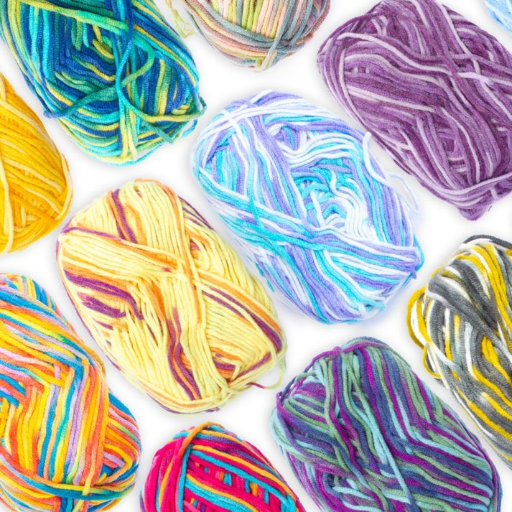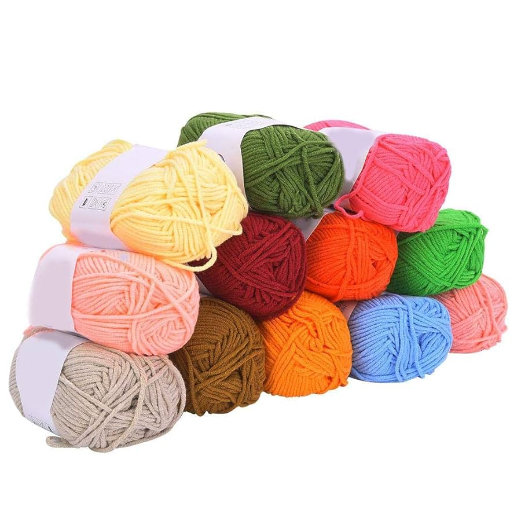Crocheting blends artistry, relaxation, and heritage into one spectacular craft. It offers relaxation while simultaneously engaging one’s creativity. A beginner can unlock an endless array of designs and textures simply by mastering the basics. Achieving the mastery of the second row forms the groundwork that serves as the basis towards every subsequent project. This blog strives to walk you through the key steps of mastering the art of crochet with emphasis on confidently achieving the second row. You may have never held a crochet hook before or you may be a seasoned learner; in either of these cases, this guide will assist you in building a strong grounding in crochet by offering step-by-step instructions, practical advice, and expert insights. By mastering these tips and tricks, you will be able to achieve smoother and more consistent stitches while being empowered to take on intricate patterns in your crochet journey.
How do I start the second row in crochet?

To work the second row in crochet, turn your project over, so the other side faces you. Then, create a foundation chain based on the stitch type for the row (e.g. for single crochet chain one and for double crochet chain two). Insert the hook into the first stitch of the prior row and follow the stitch style for that row. By following this step, you will ensure you have balance and don’t misalign your project.
Understanding the transition from first to second row
Learning to transition from the first to the second row in crochet taught me how important a firm foundation really is. At first, turning the work seemed difficult, but correctly matching the type of chain stitches solved the issue. I learned that being exact about where the hook was placed—directly into the first stitch of the previous row—was crucial for maintaining alignment. With time this step became instinctual, and was incredibly helpful in giving my projects a well-structured appearance.
Turning your work correctly
Aligning your work in crochet requires a few steps to ensure that the alignment and consistency are preserved. First of all, remember to chain the correct amount of stitches for the stitch type you are working on; for instance, chain one for single crochet or chain two for double crochet. A turning chain counts as the first stitch in the subsequent row. Now, rotate your work smoothly but make sure to insert your hook into the correct starting stitch, most likely the first or second stitch depending on the pattern instructions. Such minor tweaks improve the appearance of your edges and ensure that your work looks professional and neat.
Creating a chain stitch to begin the new row
As I begin a new row, establishing a sharp and clean foundation with my chain stitches samples is always my priority. Over my years of work, I’ve learned that the relationship between the stitch height and the number of chains that need to be done is very crucial. For example, when working with single crochet, a single chain stitch will suffice, but double crochet requires two chains in order to transition smoothly. Consistent evenness in my tension is something I also pay attention to whilst chaining because it aids in preventing puckering or inconsistencies on the bordering edges. These purposeful crocheting practices, although primary, all contribute to the finishing touches on any crocheted project.
What’s the step-by-step process for crocheting the second row?

To crochet the second row, first, you need to turn your work to prepare for the new direction. Start with the correct number of turning chains for your stitch type; one chain for single crochet or two chains for double crochet. Moving on to the first stitch of the previous row, skip the turning chain since it does not count as a stitch unless the pattern states otherwise. Yarn over, pull through, and follow the crocheting technique you are using to create the stitch. Repeat the process for every stitch across the row, maintaining even tension throughout. When you reach the end of the row, ensure that you have the same amount of stitches as the first row and avoid unevenness throughout your project.
Inserting your hook into the first stitch
I usually do not consider the turning chain as a stitch while working into the first stitch. This may be different if the pattern states otherwise. It is important to me that the edges are clean and aligned. Consistency is important and I maintain even rows by stitching with steady tension. This allows the entire project structure to be preserved, which results in an appealing outcome. It is a straightforward directive but it is definitive in setting the overall impression.
Working single crochet stitches across the row
To execute single crochet stitches across the row, insert the hook into a stitch, yarn over and pull up a loop. Then yank the yarn over back towards yourself and bring it against the base of the hook. Yarn over again and pull through the two loops on the hook to end the stitch. Maintain even tension throughout the project. This stitch creates an exceptionally versatile fabric suitable for an array of projects.
Counting stitches to maintain consistency
To ensure consistency in crocheting, it is always advisable to tally stitches and check if the stitch count correlates with your pattern. An incorrect count could result in uneven edges and distorted shapes. You can also use markers or counting methods in small segments to improve accuracy throughout the project. This easy habit is incredibly effective in obtaining results of a professional standard.
How do I ensure my second row of crochet is even?

the second row of a project will look smooth only if the correct number of stitches are present in the first row. The first row must be perfectly uniform in order for the second row to be accurate. Maintaining constant tension is crucial, as uneven tension will cause stretch and pull inappropriately. Furthermore, I verify that each unit is fully intact, and also periodically check edges to ascertain that they are aligned with the foundation. The aforementioned steps will make the project professionally polished.
Maintaining proper tension throughout the row
Keeping the proper row tension is essential for a finished and polished outcome of the project. I, myself, have experienced that this skill can be mastered over time as you pay attention to some factors. Here is what I pay attention to in order to have proper tension all through:
- Grip on the Yarn: My non-dominant hand’s grip on the yarn deserves my scrutiny. If the grip is too tight, the stitches are too small and too tight; if the grip is too loose, stitches are unreliable and floppily uneven. The perfect tension where the yarn glides, but is still controlled, is of utmost importance.
- Hook and Movement: My movements and rhythm with the hook around the stitches contribute to the outcome as well. Each stitch should ideally have a loop of yarn pulled through them, woven with an equal amount of tension. A change in rhythm is likely to cause some stitch size complications.
- Type of Yarn and Hook: Every combination of yarn and hook is likely to behave in their own unique fashion, necessitating an adjustment of grip and technique. For instance, some yarns that are slick may need to be held a little tighter, whereas textured yarns may need a softer grip. Also, having the right hook size in accordance to the weight of the yarn is crucial.
- Body Position and Comfort: The way I position my hands and arms is equally important. If I am tense while crocheting, that tension can manifest itself in my hands, impacting my stitches. Relaxed posture with appropriate lighting allows me to maintain constant, smooth tension throughout.
- Consistency Over Perfection: Finally, I have to tell myself to be okay with accepting some changes and not forcing every single stitch to look the same. Eventually being able to maintain a steady pace and rhythm becomes automatic.
This is the way I maintain symmetry in my rows and edges which is polished and professional. It takes a bit of trial and error, but with enough patience, consistent tension is absolutely achievable!
Using stitch markers to keep track of your progress
Stitch markers play an essential role in tracking your progress and can improve efficiency in your projects. Markers can be placed where you want to track points, like the start of a round, cycles of repeating patterns, or where special stitches are used. This helps in not losing or placing marks in the wrong places. It will definitely aid in keeping track of consistent features and ensures accuracy even in the more intricate designs. In multi-stage projects, stitch markers have been proven to be of great assistance, because they allow you to concentrate on work as opposed to constantly counting or checking your progress.
Avoiding common mistakes that lead to uneven rows
one of the frequent reasons for having uneven rows is the absence of inconsistent tension. I always suggest setting attention to how tightly or loosely one pulls at the yarn because even the slightest differences can change the outcome of the project. Another common problematic issue is stitch omission or unintended stitch addition, which mostly occurs when trying to keep track of the end of the row. In an effort to remain stitch accurate, I prefer to use a row progress or pattern tracker. Finally, ensure you have correct back and hand control so there are no unnecessary interruptions to the flow of work and thus unequal rows.
What’s the difference between single and double crochet in the second row?

The key variation regarding the second row of single and double crochet is the height of the stitch, as well as how they build off the foundation row. For single crochet, I place my hook in the working stitch, then I pull a loop and yarn over to complete the stitch with a pull-through on the two loops. This method yields a more compact fabric which works wonderfully with intricate or robust projects. In double crochet, the stitches are less compact. This is because they start with a yarn over prior to the hook insertion into the designated stitch. I also yarn-over once more after pulling a loop; following that, I pull through two loops two times. Dolbre crochet yields taller stitches, and as a result, the fabric is more pliable and less dense. The final decision regarding the two options will depend on what type of texture and shape you want in your project.
Technique for single crochet in the second row
To execute a single crochet in the second row, start by making a chain of one at the beginning of the row to achieve the height needed for the rest of the row. Use your hook on the first stitch of this row, ensuring that you go under both strands of the stitch from the prior row. Yarn over and draw a loop, yarn over again, and pull through both loops on the hook to execute single crochet. Continue doing this till the end of the row while maintaining the same tension on the yarn to create seamless fabric.
Steps for double crochet in the second row
To execute a double crochet on row two, begin by placing two or three chains (as instructed by your patterns) at the start of the row to accommodate the height of the double crochet stitch. Yarn over and hook straight back into the first stitch of the row while ensuring the hook goes below both loops of the stitch underneath it. Yarn over again and pull a loop; there are now three loops on the crochet hook. Yarn over once again and pull the first two loops on the hook; there are now two loops on the hook. Now to finish, yarn over and pull to the last two loops to finish the double crochet. Continue working in this way in the row recommencing each stitch in the same manner to achieve a smooth and even fabric.
Choosing the right stitch for your project
When selecting the most appropriate stitch for a given project, I always start by asking myself the type of item I am making. If I am working on something warm and comforting like a blanket, I try to use warmer stitches like the single crochet and waffle stitches. For lighter projects like lace shales, I opt for intricate and open designs made of chain stitches and double crochets, which achieve my desired effect. The type of yarn and its weight are important considerations as well. Bulky yarns tend to work better with less complex stitches so as not to overpower the design, whereas more intricate patterns showcase fine yarns. In the end, the stitch selected dictates how the entire work will be, thus, aligning it to the project’s function and the aesthetic goals is time well spent.
How can I troubleshoot issues when working on the second row?

In order to work on problems on the second row, focus on the foundational row first, because this error-free row is what makes the rest of the rows fall into place. Assess whether your count of stitches meets the required target. Be certain that no stitches were omitted or added by mistake. If the pattern is not aligning, review the pattern instructions against your work to see if there have been any misunderstandings regarding the types and locations of the stitches placed. Make sure you are also checking the amount of tension, as uneven tension applied can distort the row and impact the entire project. Following these procedures will solve issues in a timely manner.
Identifying and fixing loose or tight stitches
In the case of correcting tight and loose stitches of any kind, I first consider the tension in my hands as well as the yarn while working. Lack of sufficient tension usually result in loose stitches, therefore I make an effort to keep the yarn in my hand more. Likewise, tight stitches usually occur due to too much grip on the yarn or hook. In this case I need to relax my hands a bit more and alter the pace of work so that the yarn can move more freely through the hook. If this or the opposite issue persists, my technique is the problem and I have to check if my hook size matches the yarn size for proper consistency. Mastering tension control continues to be the most effective way to encourage uniform stitches and avoid frustration in upcoming projects.
Dealing with unintentional increases or decreases
Changes to your stitches that happen mistakenly can be quite annoying. However, if you know the reasons that are usually prevalent, you would have an easier time dealing with the issue. Here’s what I do in such cases:
- Losing track of the stitch count – The inclusion or omission of stitches while working on repetitive patterns can lead to counting errors on my end. To make sure that I always have an accurate tracking of stitches, I mark intervals or prominent sections of work with stitch markers. Furthermore, counting the stitches at the termination of each row proves to be quite effective in recognizing issues early on.
- Misreading the pattern – There are times where I understand that a certain increase or decrease is a product of my misinterpretation of the pattern. I always ensure to read the pattern in detail before embarking on it, and I never forget highlighting the increased or lowered numbers to catch them easily.
- Uneven tension – Loosening or tightening of stitches done repetitively may lead to missing or adding some stitches, which can be problematic if not checked regularly. I’m steadying the speed at which I knit and controlling how tight the stitches are, which keeps my work consistent,t which is very crucial.
- Accidental loops – Sometimes I do pull the stitch with the hook forming an unintended loop from the previous row. I have learned that when pulling the yarn, I should remember to keep the hook insert clean so that it doesn’t cut the yarn prematurely.
- Distractions – I Occasionally lose my focus when crocheting while performing another task. When working on more difficult parts of a project, having focused work periods scheduled helps me stay on track and reduces mistakes.
At all times managing these factors keeps me in control of my stitch count and ensures my projects turn out as desired. Mistakes are a part of learning, so I view them as chances to improve my skill.
Correcting mistakes without frogging the entire row
The most important aspect is being able to identify the matter and focus on addressing it in a careful manner. For less complex issues where cancelling or adding stitches is required, take care to only extract the parts of the few stitches which need to be pulled out to reach the area of concern. Once you have reached the area where changes need to be made, correct it and then proceed to rework the stitches in a way to ensure that proper tension and alignment with the rest of the row is maintained. With larger mistakes, it is suggested that a smaller hook be used so that the rests of the stitches are not disturbed. After any set adjustments are made, always confirm the work that has been done is accurate so that the pattern is not disturbed at any point.
Are there any tips for making the second row easier for beginners?

Yes, allow me to offer a tip or two to ease the difficulty that the second row brings. To begin with, always remember to do a foundation row that is loose enough to work into, and that can be achieved by changing to a larger hook for the initial chain. Another step which is equally helpful is to determine where the top two loops of each chain are so that you know which top you want to work into, be it the back bump or front, depending on your choice and pattern. Using stitch markers to mark the first and last stitches helps avoid zig-zag lines, which is useful when Learners are still mastering their tension control. Finally, remember to take your time with trying to build a set pace so that you can maintain a reliable flow when moving forward.
Using a larger hook for practice
Practicing with a larger sizing hook is one of the best techniques for building confidence. In my experience, many beginners get frustrated as they encounter problems with tight stitches. For example, a larger hook creates looser stitches which are easier to see and work into. This enables you to concentrate on basic movements without struggling with tension problems. This small adjustment makes a big improvement in progress as well as enjoyment. I recommend this strategy for beginners.
Choosing the right yarn for learning
When selecting a yarn for beginners, consider using a medium weight, often referred to as worsted weight or category 4 yarn. This generic type of yarn is perfect for practicing as it is thick enough to be handled easily and stitches will be visible. Furthermore, an acrylic or cotton light textured yarn will facilitate seeing the stitches clearly , so try to avoid textured yarns. Too much texture or overly dark colored yarns can make learning difficult.
Practicing with simple patterns before advancing
Familiarizing yourself with basic configurations before moving forward is critical in motivating you and refining your skill. Learn basic projects like square patterns, dishcloths, and scarves since these patterns are easier to follow and allow you to channel your attention towards consistency and flow. These basic designs help to build a strong base which greatly aids in shifting to complex designs later on with ease and confidence. Mastering the basics makes it easier and more entertaining for you to take on advanced challenges.
Reference
- 14 Essential Crochet Stitches and Skills for Beginners – A comprehensive guide to basic crochet stitches and skills.
- Basic Crochet Stitches Every Beginner Needs – Covers foundational stitches for various crochet projects.
- MUST-KNOW Crochet Tips for Beginners – A collection of beginner-friendly crochet tips and tutorials.
Frequently Asked Questions (FAQs)
Q: How do I start working the second row in crochet?
A: To start working the second row, first complete your first row of stitches. Then, chain 1 (unless your pattern states otherwise) and turn your work, just like flipping the page of a book. Insert the hook into the first stitch of the previous row and begin crocheting according to your pattern.
Q: Is there a video tutorial available for mastering the second row?
A: Yes, many crochet tutorials on YouTube offer step-by-step video tutorials for working the second row. These videos often include helpful close-ups and slow-motion demonstrations to guide you through the process.
Q: How do I count rows in crochet?
A: To count rows in crochet, look at the side of your work. Each horizontal ridge represents one row. You can also use stitch markers to mark the beginning of each row, making it easier to keep track as you go.
Q: What’s the difference between UK and US crochet terms for the second row?
A: In US terms, the basic stitches for the second row are typically single crochet, half double crochet, or double crochet. In UK terms, these are called double crochet, half treble crochet, and treble crochet, respectively. Always check which terminology your pattern uses to avoid confusion.
Q: Can you provide a step-by-step description of working a second row of single crochet?
A: Certainly! Here’s a step-by-step description: 1) After completing the first row, chain 1 and turn your work. 2) Insert your hook into the first stitch of the previous row. 3) Yarn over and pull through the stitch (two loops on your hook). 4) Yarn over again and pull through both loops. 5) Repeat steps 2-4 across the row. 6) Chain 1 and turn to begin the next row.
Q: Are there any photo tutorials available for learning to crochet the second row?
A: Yes, many crochet websites and blogs offer step-by-step photo tutorials for working the second row. These visual guides can be very helpful for beginners who prefer to learn at their own pace. Look for tutorials that provide clear, close-up photos of each step in the process.
Q: How do I make sure my edges remain straight when working on the second row and beyond?
A: To keep your edges straight, make sure you’re turning your work correctly at the end of each row. Count your stitches to ensure you’re not accidentally increasing or decreasing. Also, be consistent with your tension and make sure you’re working into the correct stitch at the beginning and end of each row.
Q: What should I do if I still have questions about crocheting the second row?
A: If you still have questions, don’t hesitate to reach out to the crochet community. You can leave a comment on crochet tutorial videos, join crochet forums or social media groups, or email crochet bloggers for advice. Many experienced crocheters are happy to help beginners master these essential techniques.



















